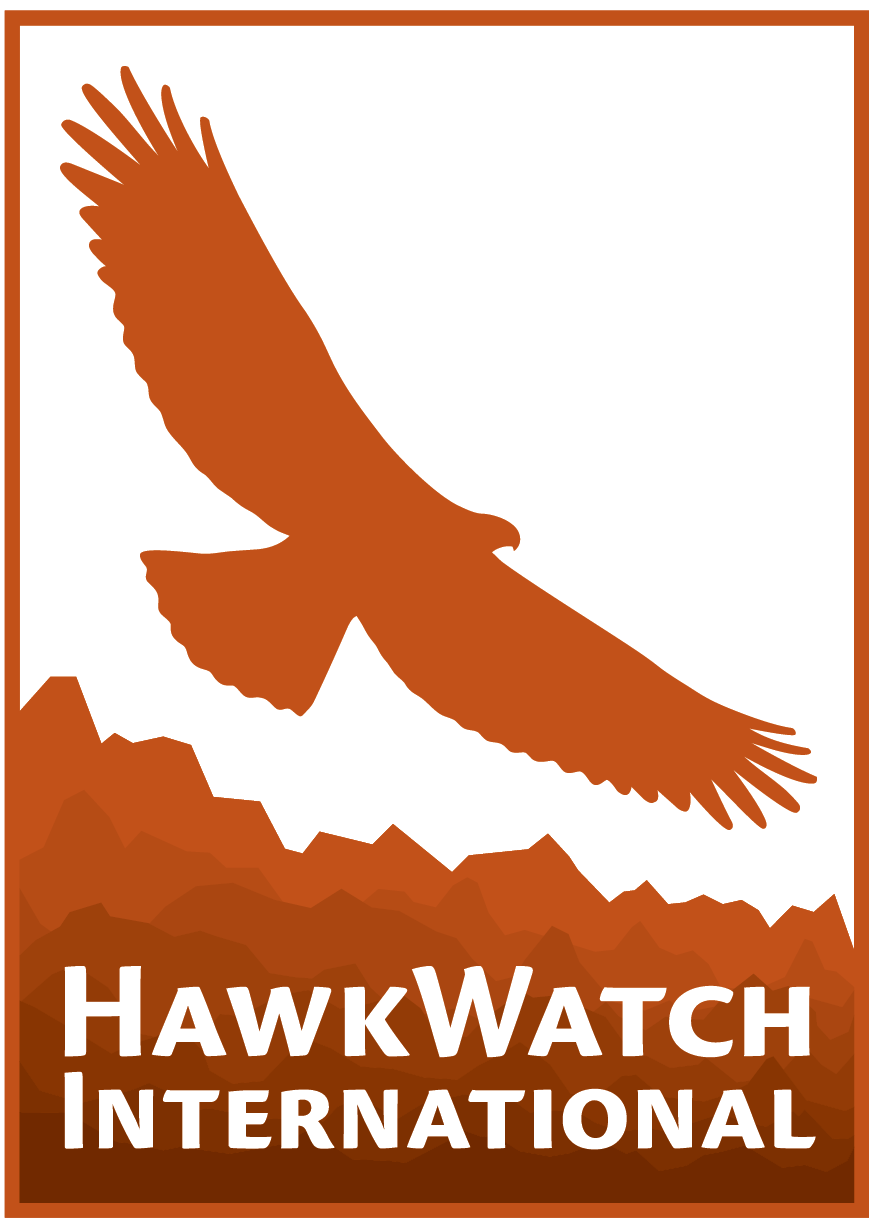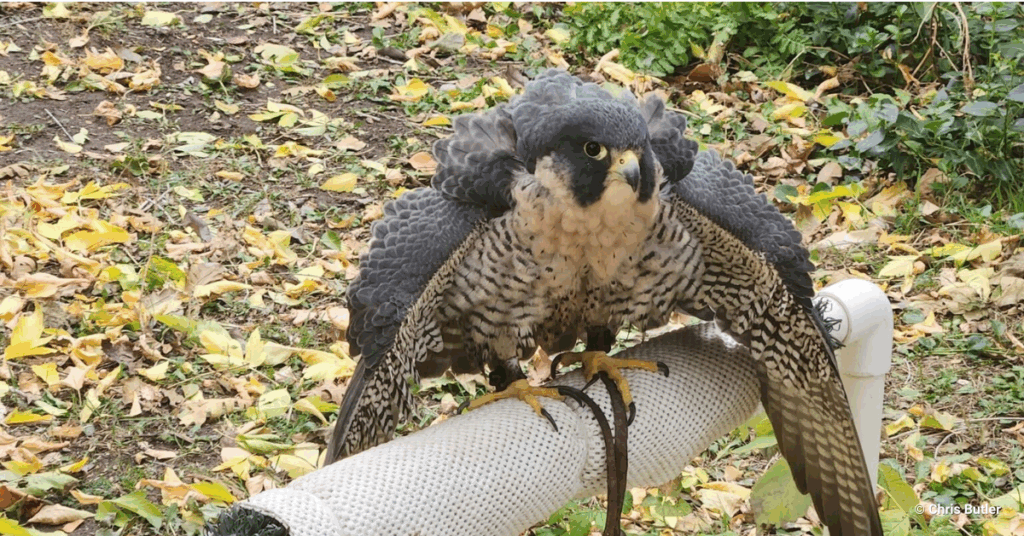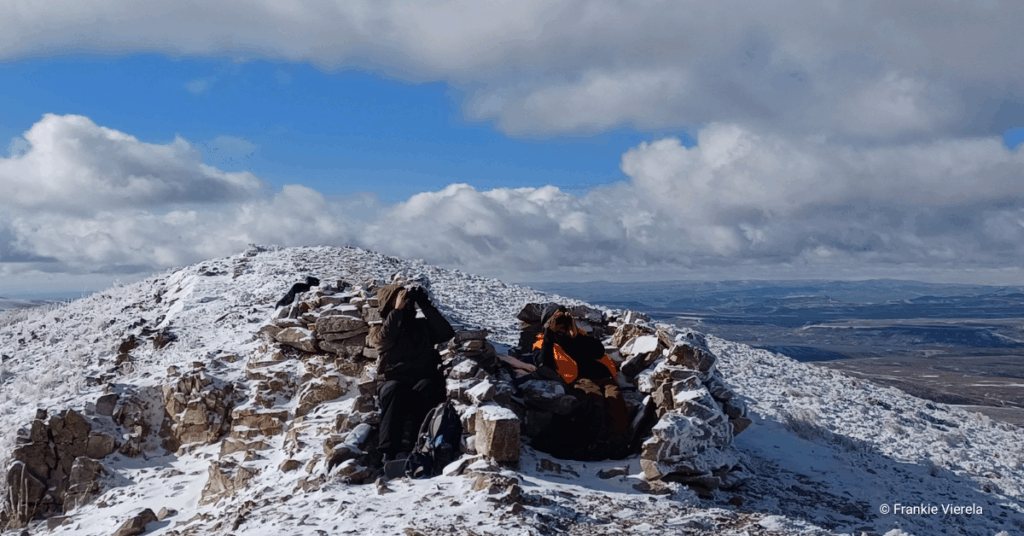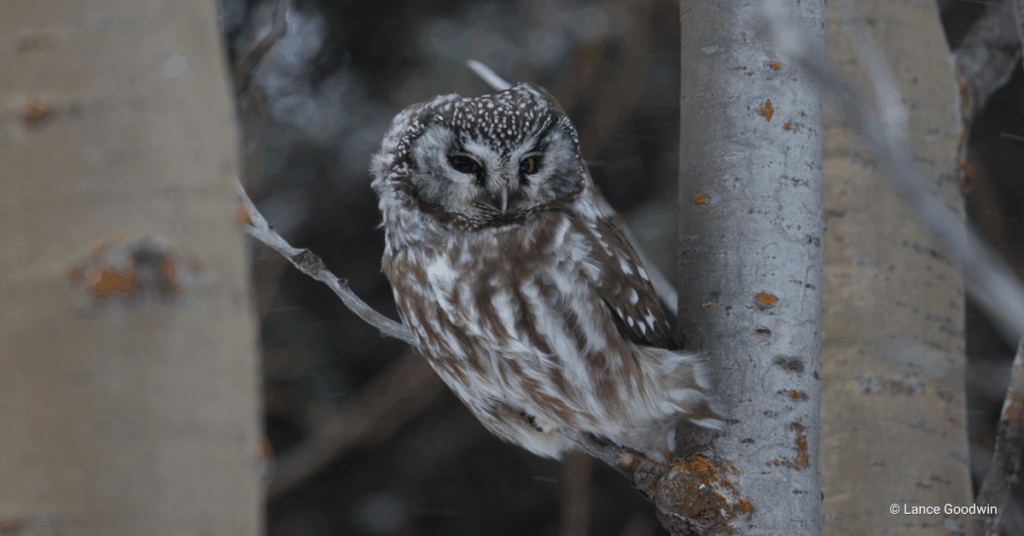The Secretarybird is a charismatic raptor of African landscapes. With its distinctive long legs and feathered crest, this species is both genetically and morphologically unique. Sadly, Secretarybirds are classified as Endangered, with populations rapidly declining due to habitat loss, climate change, and direct threats such as collisions with fences, power lines, and more recently, with wind turbines.
Despite their conservation status, critical knowledge gaps remain. Understanding the causes of breeding failures, identifying ways to improve nesting success, assessing responses to climate change, and learning about their movement ecology are essential for informing effective conservation strategies. To support these efforts, HawkWatch International launched a study on Secretarybirds in 2023 in the Western Cape of South Africa—the southernmost part of their range. Here, the species occurs at low densities across highly fragmented habitats.
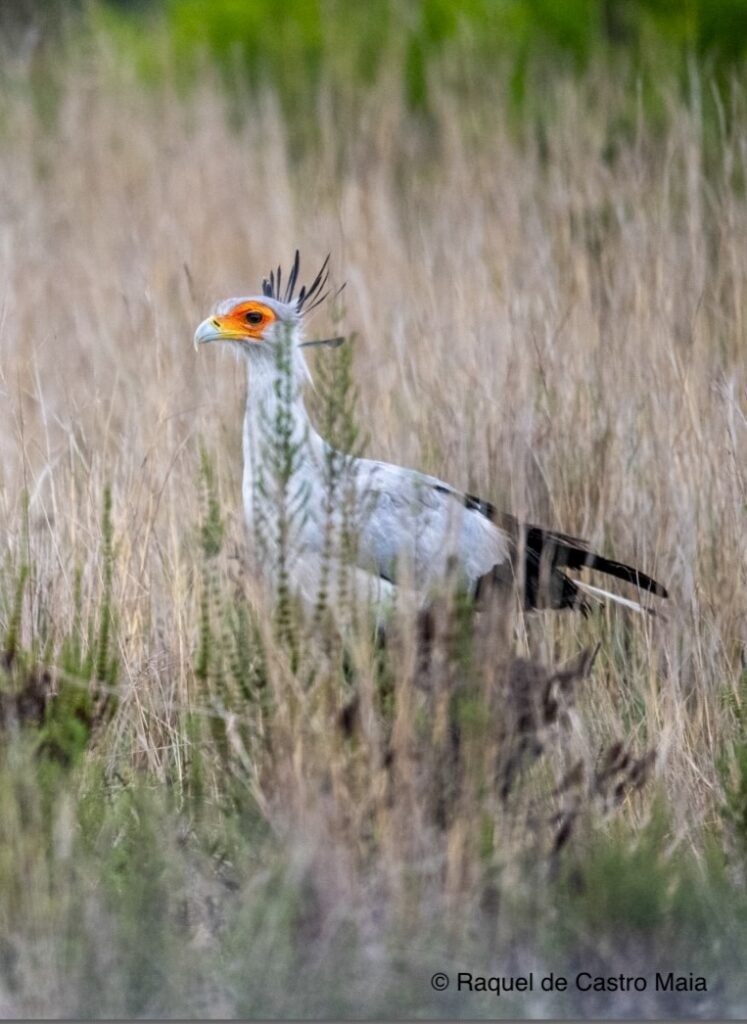
Finding Secretarybird nests proved to be harder than we expected. They nest on top of low, usually thorny trees or bushes, only three to six meters above the ground. But once the birds are lying down in the nests, you can barely see them from the ground. Our first nest was reported to us by a photographer, and we are indebted to the various landowners who also let us know about birds breeding on their land through the season. These sightings allowed us to closely follow the breeding cycle for six pairs of Secretarybirds and set up cameras at their nests to gain deeper insights into their behavior and ecology.
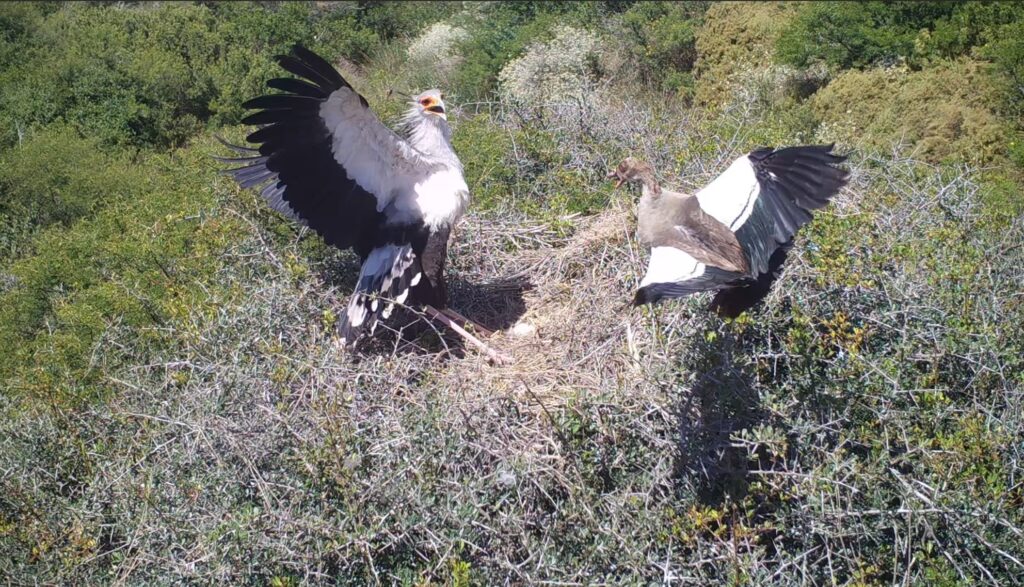
The cameras gave us more information than we bargained for. At the first nest, we were disappointed to see that a pair of Egyptian geese managed to chase off the Secretarybirds before they laid their eggs. Although this pair went on to lay eggs in another nest, they failed there, too. Later in the season, at a different Secretarybird nest which had already failed, an incubating Egyptian Goose was snatched off the nest by a Martial Eagle. And at yet another nest, geese managed to lay their eggs into the clutch being incubated by Secretarybirds (think cuckoos..?!). When the unsuspected goslings hatched, at least one of them made a nice snack for the Secretarybird—obviously not a recommended breeding strategy!
At another nest, luck struck when Roelf, our project field officer, noticed Secretarybirds around where he lives and managed to track the nest down to a tree less than a mile away. Despite being in a notoriously spikey acacia tree, disaster struck when a Honey Badger was caught on camera eating the three eggs just before they were due to hatch.
These interactions illustrate just how much pressure Secretarybirds are under in these landscapes. We were also fortunate to follow the breeding of a pair of Secretarybirds at Gondwana Private Nature Reserve. After a first failed attempt, this pair re-laid a three-egg clutch, of which one egg hatched late in the year. Ending the season on a positive note, our team actually saw the chick fledge from the nest last week.
We have been working closely with the staff at Gondwana, where we have also embarked on the first-ever study of the movement behaviour of adult Secretarybirds. We know very little about the movements of adult Secretarybirds, so GPS tracking them is critical to understand and conserve the species. At the end of the season we celebrated deploying the very first transmitter on an adult bird and we now plan to keep growing the sample of tagged birds over the coming years.
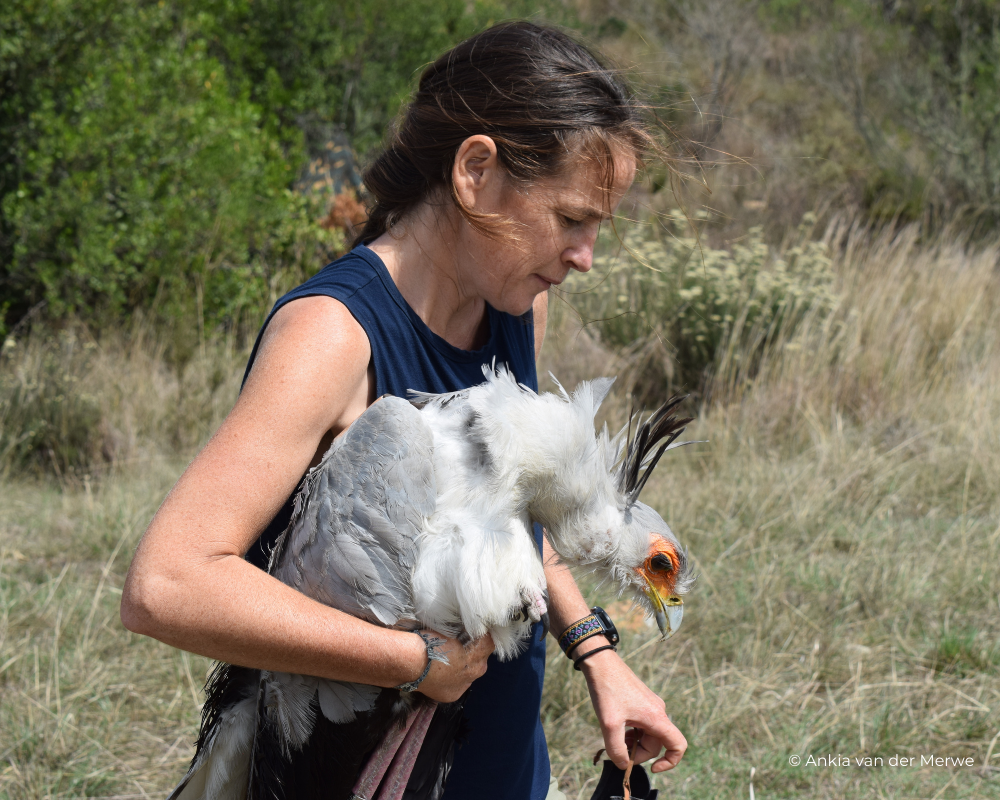
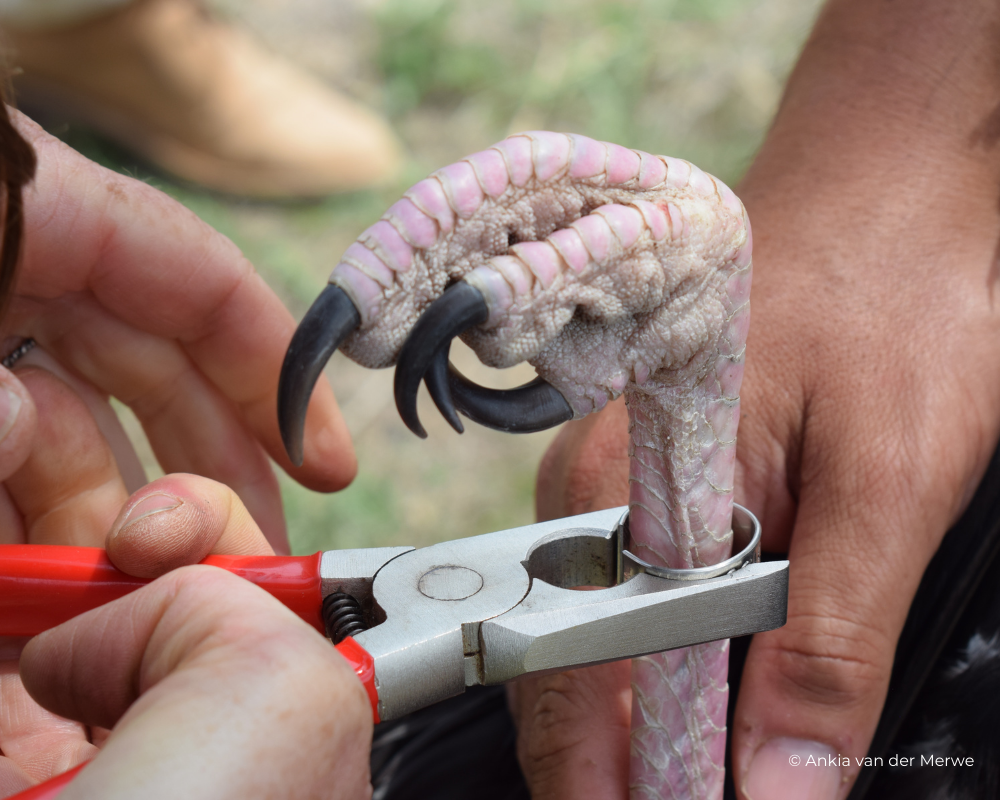
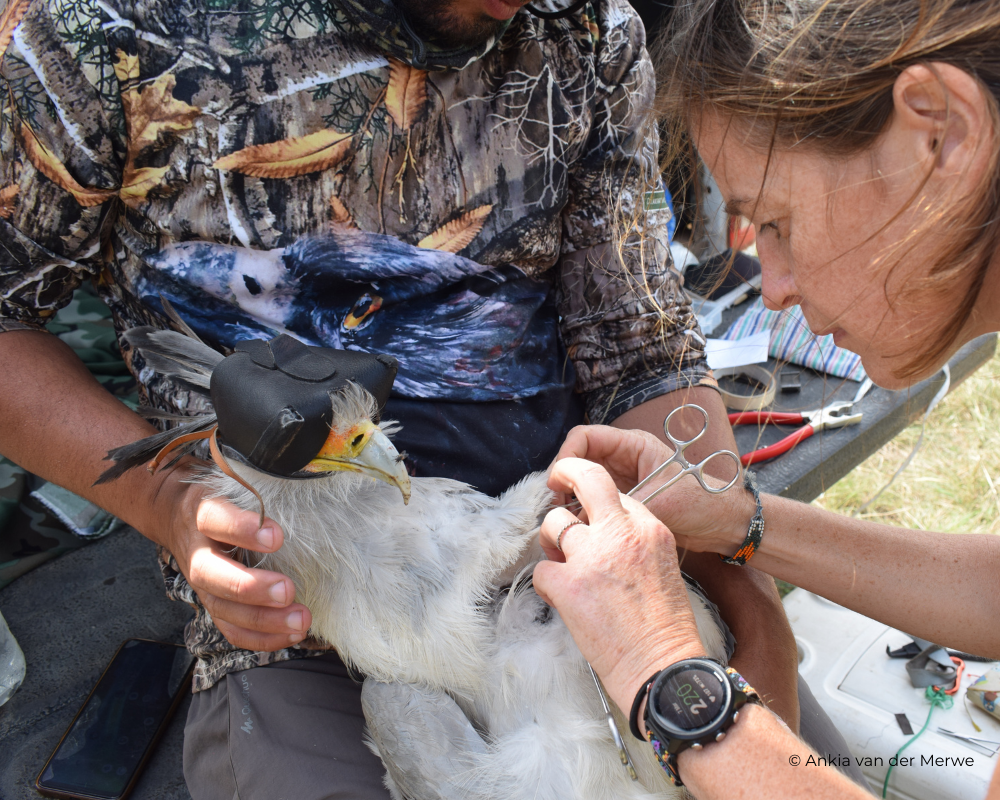
If you want to support our work tracking raptor movement, behavior, and survival, consider sponsoring a transmitter! With your monthly donation, you’ll cover the data fees associated with tracking these birds and, in return, receive quarterly updates on your bird’s movement. Click here to support the research of at-risk species: https://hawkwatch.org/transmitters/
This blog was written by Dr. Meg Murgatroyd, HWI’s Associate Director of African and Asian Programs, and Roelf Daling. You can learn more about Meg here.
